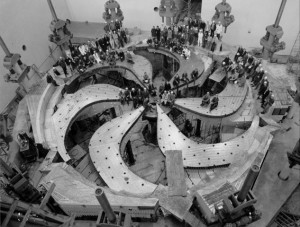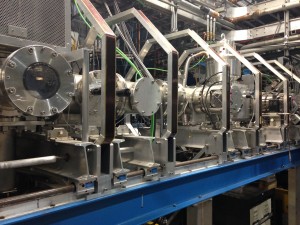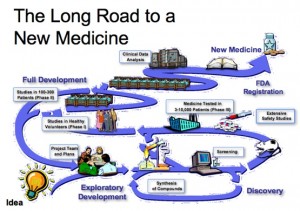Our group didn’t know what to expect as we trekked across the rainy parking lot towards the modest entrance of TRIUMF at UBC. The small blue sign seemed like an almost comical understatement to the immense laboratories looming behind it. Having no physicists among us, we thought we were in over our heads with this research. We carried on regardless, and were greeted by friendly faces when we made it inside.
We were met by Dr. Thomas Procter, a postdoctoral fellow at TRIUMF. Dr. Procter had invited us to the facility and offered to tour us round the facility. Not only did Dr. Procter give us valuable insight into his own research, but he introduced us to the world of nuclear physics at UBC.
Nuclear physics is the study of atomic nuclei their characteristics and interactions with the world around them. It is this brand of physics that TRIUMF specializes in. TRIUMF is home to the largest cyclotron in the world: a gigantic machine used to generate exotic nuclei for (among other things) studies in astro- and nuclear physics.
For example, DRAGON (Detector of Recoils And Gammas Of Nuclear reactions) apparatus at TRIUMF is a machine used to examine the formation of the nuclei we see commonly on Earth in distant supernovae (Consider rephrasing sentence). In some cases, the specifics behind the formation of these nuclei would remain largely unknown if not for DRAGON. While we got only a brief insight into the functioning of DRAGON, we were fortunate enough to have a more elaborate look at some of the nuclear structure research at TRIUMF done by Dr. Procter.
Dr. Procter is interested in a phenomenon that occurs in the nucleus called shape coexistence. The particular research paper of his that we looked at involved the isotope chain of rubidium 98. Dr. Procter and his team used TRIUMF’s powerful cyclotron to generate many isotopes of rubidium for their study. The video below gives an overview of nuclear shape detection by laser spectroscopy and some of the theory involved in Dr. Procter’s research.

It is important to have at least a rudimentary understanding of the theory involved in Dr. Procter’s work before attempting to understand his methods. The following podcast gives a general overview into the laser spectroscopy used in Procter’s work and at TRIUMF.
Unless you are in the field, particle physics is not something that occurs to most people on a daily basis. One could argue that it has little relevance to their life, but in reality, it may be the most relevant science out there. There would be no life without particular interactions between particular particles that that hold us together. In essence, particle physicists ask the big question: “What are the building blocks that make up everything we can perceive (including us) and why do they behave the way that they do?”









